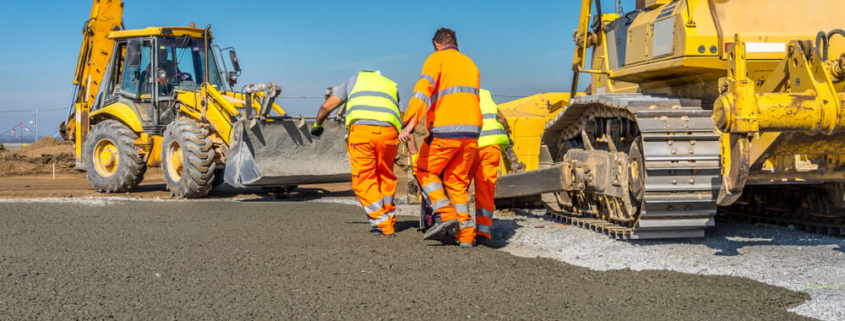Preventing Worker Injuries and Deaths from Backing Construction Vehicles and Equipment at Roadway Construction Worksites
Construction workers face numerous hazards on the job site. From the risk of falling objects to accidents involving heavy equipment and machinery, being a construction worker is one of the most dangerous jobs there is. While some accidents happen even when safety protocols are followed, most accidents and injuries are entirely preventable.
One type of accident that can be avoided when safety protocols are followed, and preventative measures are adopted is backup/backover accidents. Here’s what you need to know about the risk of reversing construction vehicles, how backover injuries happen and how they can be avoided, and what to do if you’re a worker who’s injured in a backover accident.
What Is a Backover Injury?
A backover injury occurs when a vehicle that is operating in reverse strikes a worker who is standing, walking, or kneeling behind the vehicle, as defined by the Occupational Safety and Health Administration (OSHA). The Bureau of Labor Statistics reports that these preventable accidents kill and injure dozens of workers each year.
How Backover Injuries Happen
There are numerous reasons that backover accidents happen, all of which are preventable. Some of the top causes of backover accidents include:
- Blind spots. One of the most common causes of backover injuries is a worker being in a reversing driver’s blind spot. It’s always important for drivers to double-check blind spots and for workers to pay attention to vehicles.
- Excessive noise. While vehicles are equipped with alarms that sound when they are operating in reverse, loud noises on a construction site may make it difficult for workers to hear these warnings.
- Fall injuries. While less common, a worker may be injured by a reversing vehicle if they fall off the vehicle while it’s in motion. It’s important that workers are always properly secured within vehicles.
- Failure to look. Some accidents occur simply because of the negligence of vehicle operators or workers on the ground. Failure to pay attention to surroundings, particularly any workers that may be in the pathway of a vehicle—reversing or otherwise—can be deadly.
Of course, the above are not the only causes of backover injuries. A combination of other factors can also lead to backover accidents, including things like driver negligence.
How to Prevent Backover Injuries & Deaths
OSHA recommends multiple actions that can be employed in the workplace to reduce the risk of backover injuries and deaths. These solutions include, but are not limited to:
- Using a spotter to help when backing up vehicles
- Using video cameras with in-vehicle display monitors
- Installing proximity detection devices on vehicles
- Installing tag-based systems that alert both drivers and employees on the ground when they come in close proximity to one another (i.e. when the on-the-ground employee comes near the vehicle)
- Creating internal traffic control plans
- Investing resources into employee training around traffic and vehicle safety
- Conducting regular vehicle inspections to ensure that brake lights, reverse alarms, horns, and cameras are all working correctly.
What to Do If You’re Involved in a Backup Accident
If you are involved in a backup accident on the job, it’s important to understand your rights and know what actions you need to take next. Importantly, you should seek medical care immediately. If you require emergency care, go to the emergency room or call an ambulance—emergency care does not need to be approved by your workers’ compensation insurer first. If you require non-emergent care, be sure you seek care from a provider who’s approved by your workers’ compensation provider.
You also need to provide notice of the accident and injury to your employer as soon as possible. Your employer will be responsible for reporting the accident to your insurer. Note that you have the right to negotiate your workers’ compensation claim. In most cases, you will not have the right to sue your employer, even if the accident occurred due to employer negligence. If you need help navigating your workers’ compensation claim or understanding your rights, it is a good idea to meet with an OSHA Injury attorney.
Engage in Safe Practices at Work
As a construction worker, you face a number of risks every day you show up to work. You can reduce your risk of being involved in a backup accident by paying attention to your surroundings, communicating with vehicle operators, and understanding safety tips for preventing backover injuries and deaths. In the event that you are in a workplace backover accident, protect yourself by getting medical care, reporting your accident immediately, and seeking legal counsel.





Leave a Reply
Want to join the discussion?Feel free to contribute!